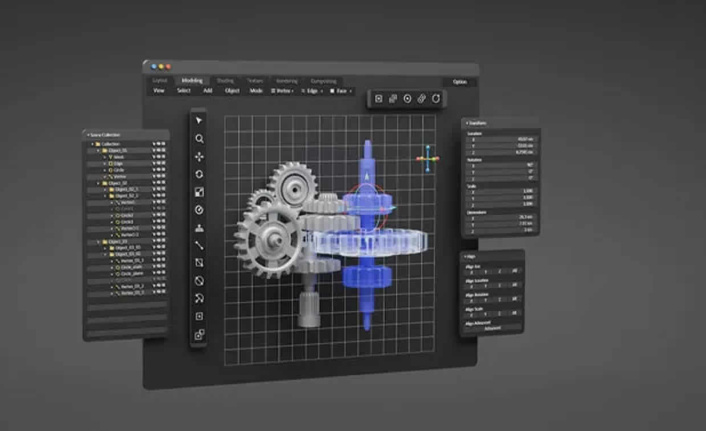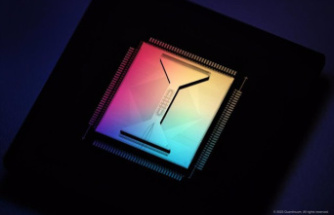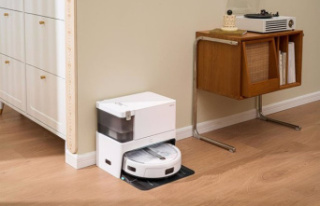The world of Original Equipment Manufacturer (OEM) manufacturing - a linchpin in the automotive, aerospace, consumer electronics, and healthcare industries - is no stranger to innovation. Fueled by technological advancement and heated competition, OEM manufacturers are perpetually on the hunt for groundbreaking solutions. Their weapon of choice? 3D modeling. By accurately capturing the geometry, dimensions, and features of a product, 3D modeling provides a solid foundation for various stages of OEM manufacturing.
This comprehensive expose explores the pivotal role played by 3D modeling in OEM manufacturing. It offers insights into how this revolutionary tool improves design accuracy, reduces costs, and accelerates time-to-market.
Precision Matters
For OEM manufacturers, precision isn't just important; it's paramount. A blessing for these meticulous craftsmen is 3D modeling - a tool that enables the creation of virtual product representations with unmatched accuracy. Engineers armed with advanced software tools craft detailed models mirroring the physical dimensions and characteristics of final products down to minute details.
These digital doppelgangers provide realistic views of products' form, fit, and function. They allow engineers to spot potential design blunders before actual manufacturing commences. This preemptive approach significantly minimizes expensive missteps while helping manufacturers deliver products that meet or even exceed customer expectations.
Design Process Amplification
3D modeling plays a crucial role in original equipment manufacturer (OEM) manufacturing processes. A primary benefit of incorporating 3D modeling in OEM manufacturing is its potency in enhancing design and development processes.
Manufacturers can create precise digital twins of their products enabling intricate modifications and simulations early on. This crucial insight allows engineers to identify potential flaws or design constraints at preliminary stages, minimizing errors and ensuring an efficient production cycle.
With the aid of 3D modeling services for OEM manufacturers, they can harness cutting-edge technologies without straining resources on infrastructure or specialized personnel hiring. These services meld state-of-the-art software tools with expert engineering knowledge resulting in highly accurate 3D models even for complex products.
Manufacturers can then zero in on their core competencies while ensuring superior product design. Moreover, they can rest assured their products comply with industry standards and stringent safety guidelines.
Collaboration: The Holy Grail
Seamless collaboration is the lifeblood of successful OEM manufacturing. It involves multiple stakeholders and spans across the entire product development lifecycle. 3D modeling acts as a catalyst in this process by providing a common platform for engineers, designers, and other team members to visualize and assess design.
The ability to share digital prototypes across different locations and time zones streamlines communication, reduces errors, and accelerates decision-making processes. This ensures that everyone involved has a clear understanding of the design intent and can promptly resolve potential conflicts or discrepancies.
Efficient Production Processes
OEM manufacturing thrives on efficiency - an element where 3D modeling plays a vital role. By creating virtual prototypes, manufacturers can envision the entire manufacturing process before tangible production commences. This foresight allows them to pinpoint potential bottlenecks or inefficiencies, thus optimizing the production line for maximum output.
Additionally, 3D modeling empowers manufacturers to create parametric models that can be easily tweaked to accommodate changes in customer requirements or market demands.
The Race Against Time
In today's swift business climate, time is more than just money; it's survival. OEM manufacturers are constantly under pressure to usher their products into markets rapidly to outpace competitors. Cad conversion services come to the rescue here. These services enable manufacturers to convert physical designs or 2D drawings into precise 3D models. Digitizing existing designs saves considerable time in product development as it eliminates the need to start from scratch allowing easy modification and iteration of existing designs resulting in significant timesaving and faster product launches than ever before.
Conclusion
The significance of 3D modeling in OEM manufacturing cannot be overstated. It has revamped how products are designed, developed, and even manufactured. From enhancing design accuracy and streamlining collaboration to accelerating time-to-market, 3D modeling offers a plethora of advantages that equip OEM manufacturers with a competitive edge in their respective industries.
As technology marches forward, we can anticipate even more sophisticated tools and techniques poised to further revolutionize the field of OEM manufacturing. By embracing these advancements, manufacturers will continue to deliver innovative products that meet the ever-evolving needs of consumers worldwide.
Date Of Update: 14 January 2024, 01:05












